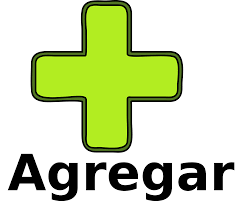The Nuances of “Agregar” in Spanish: Understanding Its Use and Context
The Spanish verb “agregar” is a versatile word that plays a significant role in the language, particularly when discussing the concept of adding or including something. While it shares similarities with other verbs like “añadir” and “sumar,” “agregar” carries its own unique connotations and is used in specific contexts that differentiate it from its counterparts. This article delves into the meaning of “agregar,” its usage in various sentences, and how it compares to other verbs related to the concept of addition.
What Does “Agregar” Mean?
The verb “agregar” is generally translated as “to add” or “to include.” It conveys the idea of incorporating an additional element or component into an existing set, collection, or group.
The word is commonly used in both formal and informal contexts, making it a frequent choice in everyday conversation as well as in written communication. Whether you are adding a name to a list, including an ingredient in a recipe, or inserting a detail into a document, “agregar” is the go-to verb for these actions.
How to Use “Agregar” in a Sentence
To better understand how “agregar” is used, let’s explore a few examples that illustrate its application in different contexts:
- Adding a Name to a List:
- Puedes agregar tu nombre a la lista si quieres asistir al evento.
- (You can add your name to the list if you want to attend the event.)
- Enhancing a Recipe:
- El chef decidió agregar una nueva especia para mejorar el sabor del plato.
- (The chef decided to add a new spice to enhance the flavor of the dish.)
- Inserting a Signature:
- Para completar la inscripción, agrega tu firma al final del documento.
- (To complete the registration, add your signature at the end of the document.)
In these examples, “agregar” is used to indicate the action of adding something that enhances, completes, or expands upon what is already present.
Comparing “Agregar” with “Añadir” and “Sumar”
While “agregar” is often used interchangeably with “añadir,” there are subtle differences between the two. “Añadir” generally means to append or to add something extra to what already exists. It is a versatile verb that can be applied in both tangible and intangible contexts. For example:
- Voy a añadir un capítulo más al libro.
- (I am going to add one more chapter to the book.)
- Añade sal al guiso, por favor.
- (Please add salt to the stew.)
In contrast, “agregar” is typically used when incorporating an element into a group or set, often emphasizing the inclusion of something new or additional. While the meanings are similar, “agregar” might be preferred in contexts where the focus is on the act of inclusion.
“Sumar,” on the other hand, is more specific to arithmetic addition or the metaphorical idea of contributing to a greater whole. It is used when combining quantities or enhancing something abstract, such as experience or effort. For example:
- Si sumas 10 y 15 obtienes 25 como resultado.
- (If you add 10 and 15, you get 25 as a result.)
- Su experiencia suma mucho al equipo de trabajo.
- (His experience contributes a lot to the team work.)
While “sumar” can be used metaphorically, it is less flexible than “agregar” or “añadir” when it comes to non-numerical additions.
Conclusion
In summary, “agregar” is a valuable verb in Spanish, especially when discussing the addition or inclusion of elements into a set or group. Its usage is widespread, making it a crucial part of the language for both everyday conversation and formal communication. While it shares similarities with “añadir” and “sumar,” understanding the nuanced differences between these verbs can enhance your fluency and precision in Spanish. Whether you’re adding a name to a list, a spice to a dish, or a detail to a document, “agregar” is the perfect word to convey the action of inclusion and enhancement.




